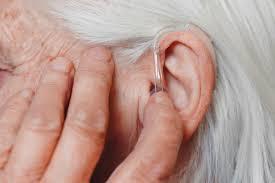
There is appropriate etiquette for most public-facing situations. Interacting with someone who is deaf or hard of hearing is no different. Taking some time to consider where the other person is coming from and how they want to be treated can go a long way toward effective communication. Here are some tips to get you started.
Know that communication preferences among the Deaf, while largely visual, are personal. While some people who are deaf will be able to read lips, those who use American Sign Language as their first language may not have mastered speech reading. In other cases, people who have some level of hearing may prefer to communicate verbally. When in doubt, ask how someone prefers to communicate.
Get the person's attention before you start speaking. Unlike someone who has full hearing, a person who is deaf cannot tell you are speaking unless they see you. A simple gesture like tapping them on the arm can alert someone that you are requesting their attention.
Position yourself in the best light. Having bright lights or an open window behind you will cast your face in shadows and possibly interfere with visual communication. Try to stand where your face and the front of your body is well lit. Also, make sure there are no objects between you and the other person that would block their line of sight.
Along the same lines, do not turn your back or face away from a deaf or hard of hearing person while you are speaking with them.
Do not shout or yell. If a person is deaf, no amount of yelling will help them hear you. Instead, speak clearly to help someone who is hard of hearing make out your words. This is especially helpful if they use any amount of speech reading. If they do not understand what you are saying, try rephrasing instead of repeating it over and over.
Make it a point to actively listen. Communication is not one way. Whether you use an interpreter, ASL, or written communication, take the time to consider the input of those who are deaf or hard of hearing.
If you do use an interpreter, keep your attention focused on interactions with the deaf person. Address them directly and face them while you speak and listen to the interpreter.
Perhaps most importantly, remember that everyone should be treated with courtesy and respect. Being proactive and taking steps to help facilitate communication in one-on-one or group situations. It will let people who are deaf or hard of hearing know that their feelings and opinions matter. Which, when it comes down to it, we should do for everyone whom we interact with.

